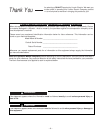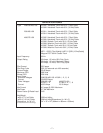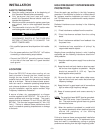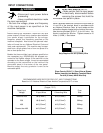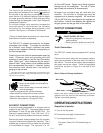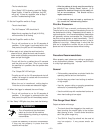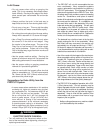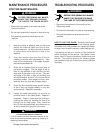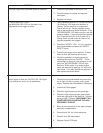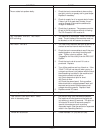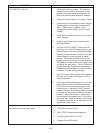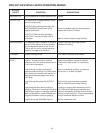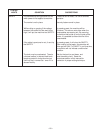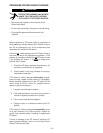
In All Cases:
• Do not pause when cutting or gouging the
metal. This is not necessary and causes opera-
tional difficulty. Pausing at the edge of the work-
piece causes poor consumable life and erratic
operation.
• Always position the torch in the best way to
keep dross and hot air from burning back into it.
• Do not carry a long arc. This may trip the safety
or fault circuits and wears consumables rapidly.
• Do not drag the nozzle above the mid-range
setting.
Always hold a standoff of 1/8” above mid-range.
• Use a Drag Cup where possible but only when
the current is in the blue or red ranges. Drag
the nozzle in the yellow range. The use of the
Drag Cup at low currents (in the yellow range)
may cause problems. Proper use of the Drag
Cup is the best way to get maximum nozzle and
consumable life.
• Use the proper machine setting. Running the
system at maximum output will not produce the
best cutting performance in most situations.
• Use the proper cutting or gouging procedures
referred to in procedures guideline.
• Use the nozzle with the largest orifice size that
gives an acceptable cut. This will improve parts
life. Never use the .035” (0.8mm) nozzle at out-
puts above the yellow range.
Suggestions for Extra Utility from the
PRO-CUT System:
• In some cases where moderate or thin sections
are being cut, higher air pressure may give bet-
ter consumable life. At pressures about 80 psi
(551 kPa), the pilot arc may sputter. This may
be an annoyance but it will not damage the
torch or power source. 60 psi (413 kPa) mini-
mum while air is flowing is the recommended
pressure because it is the minimum necessary
to provide proper cooling in all situations. Feel
free to experiment with higher pressures (not to
exceed 120 psi (827 kPa) at the regulator input).
ELECTRIC SHOCK CAN KILL.
• Turn off machine at the disconnect switch on the
front of the machine before tightening, cleaning or
replacing consumables.
------------------------------------------------------------------------
• The PRO-CUT will cut with consumables that are
worn considerably. Many competitive systems
require replacement consumables long before a
PRO-CUT system does. This is because of the solid
state current regulation that the PRO-CUT has. Also,
the safety reset circuit provides a means of extending
nozzle life. Sometimes a small piece of material
breaks off the electrode and bridges the gap between
the nozzle and the electrode. In a competitive unit,
this would often result in the destruction of the elec-
trode and nozzle due to overheating. This will result
in the tripping of the PRO-CUT safety circuit. When
this happens, turn the power off, remove the nozzle
and scrape any debris from its inside cavity with a
piece of sturdy wire or a suitable drill bit. Replace the
nozzle, turn on the power and continue cutting.
• The electrode has a hafnium insert at the tip which
greatly prolongs the life of the consumable. When
that insert has been consumed, the machine will
automatically turn off output and lock up in “FAULT”.
At this point, replace the electrode and the nozzle; it
is not recommended to continue cutting with an elec-
trode that has consumed all of its hafnium.
• Use of the nozzle with the largest orifice size that pro-
duces acceptable cutting results will maximize con-
sumable life. Procedures given are all based on a
.042" (1.0mm) orifice size. Smaller orifice sizes con-
strict the arc more, raising the energy density and
therefore the temperature. Larger orifice sizes have
an opposite effect. Small orifice nozzles run hotter
and wear faster than large orifice nozzles but pro-
duce a finer cut with less kerf width. There is a cer-
tain current where each orifice size becomes unsta-
ble because it runs too hot. Never use the smallest
.035” (0.9mm) orifice size at outputs
above the yel-
low range because it will be quickly destroyed.
• The PRO-CUT 60 is capable of operation with a 50 ft.
(15.2m) plasma torch. Pilot arc operation may be
slightly degraded with this torch installed. Sputtering
may occur after the pilot arc is established and occa-
sionally the pilot arc may not light after the trigger is
depressed*. Keep in mind that the condition of the
consumables and air pressure level have a large
impact on pilot arc ignition.
* Neither cutting performance nor machine reliabili-
ty will be lessened by this condition.
– 14 –
WARNING



